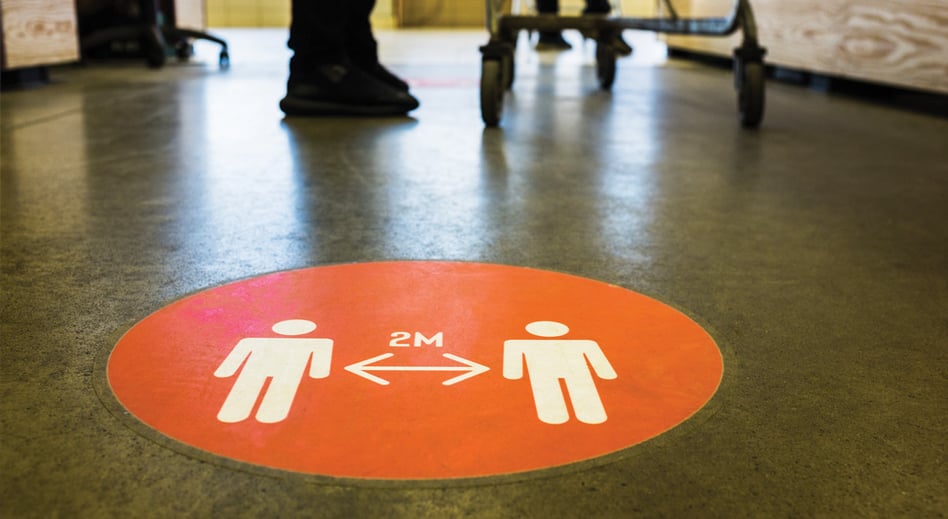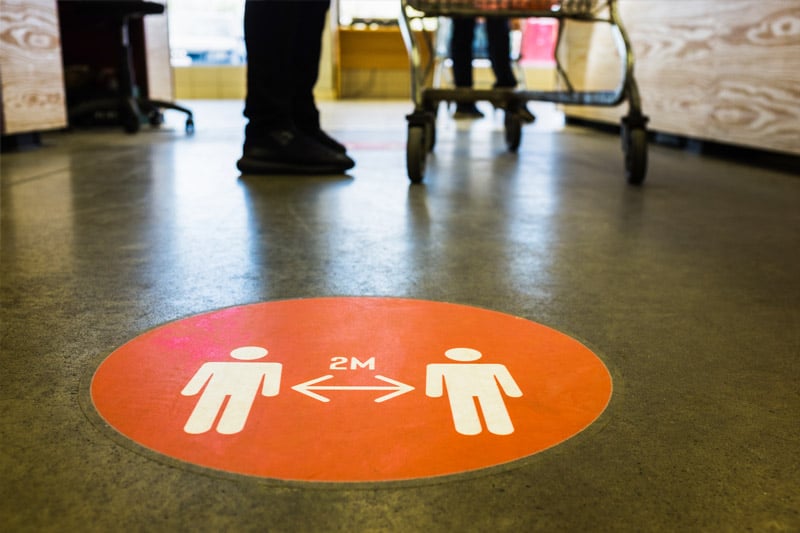
While many companies have temporarily adapted to working remotely, the time is quickly approaching when return-to-work plans will be necessary. One of the major HR challenges for returning to a physical office is bringing social distancing guidelines to the workplace. Measures will need to be introduced to prevent further outbreaks of COVID-19. Tech solutions may be necessary to ensure a smooth transition, but there are also a number of low-tech measures that can be implemented. Here are some steps your organization can take.
Flexible Hours
Standard work hours may be a thing of the past. If employees are allowed to start work early or end work late, this helps with bottlenecking at work (as well as on public transit) and ensures that everyone spends less time in a crowded office. Some individuals do their best work early in the morning or late in the evening, and others may have family demands that necessitate alternate hours. Flexible hours will help those employees do their best work, and it will make social distancing easier.
Companies may want to schedule staggered shifts, to ensure the fewest possible number of employees are in an office at any given time. A morning shift and an evening shift will help, as well as the option of shorter hours. Staggering days off so that some employees are taking their “weekend” during the week will reduce crowding further.
Seating Arrangements
Even with fewer people in the office, seating arrangements may need to be changed to ensure social distancing. In open-plan offices, desks should be spaced apart, otherwise employees should be separated, with workstations between them. Integrating this with staggered shifts so that every workstation is utilized, ensures that space is still used effectively, while keeping employees safe.
While the transition to open offices has had some positive impacts on collaboration and flexibility, it may be time to return to cubicles. Physical barriers are an effective way to reduce the spread of viruses. In offices that already use cubicles, installing higher dividers will further reduce the chance of airborne viruses spreading among staff.
No-Visitor Policy
One strategy being implemented in various places is social bubbles. The idea is to expand the group of people that individuals are able to interact with to include people outside of their households, as long as the people in that bubble don't interact with other bubbles. In theory, this keeps any potential viral spread contained to a small group of people, while allowing people to interact with a wider social circle. Applying the same principle to a workplace, a no-visitor policy can be implemented so that the office acts as a de facto social bubble.
Internal visits should be curtailed as well. Visiting another workspace to chat or discuss a project increases contact and the risk of transmission. Instead, virtual meetings can be used, even for coworkers in the next room. Companies that have transitioned to remote work during this time—instead of shutting down—likely have an advantage here, as employees are accustomed to using video services for even the smallest meetings.
Reminders
Despite systemic changes, employees will need frequent reminders to maintain social distancing guidelines. Signage that outlines or illustrates protocols will be needed, as well as reminders from HR through email and other channels. The most natural thing in an office of people who see each other every day is to let distancing lapse. But these guidelines are a necessary part of viral defence for the foreseeable future.
Let TPD Help You
For help planning your company’s return to its physical workplace, do not hesitate to reach out to the qualified HR experts at TPD. You can contact us here, through email at covid19support@tpd.com, or by phone at 1.844.873.4745. For additional HR resources, visit our COVID-19 HR Support Centre.
Filed under COVID-19

.png?width=2400&name=HQ%20TPD%20careers%20hero%20(1).png)



